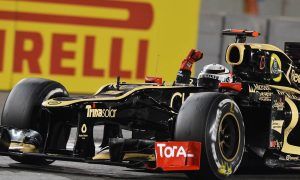
© McLaren
DON’T FORGET THE HUMAN FACTOR
Data analysis in F1 is no easy feat. Engineers are not working in a lab but in a field where conditions are changing constantly (wind, temperature, grip, etc.). And there is the small factor of having a human being at the wheel, with the driver capable of compensating any deficiencies from the car, but also of making mistakes while rarely producing the exact same lap all the time.
For example, if a driver complains about understeer on corner entry, this might not show on telemetry because he would have adjusted his style or the settings to minimise the problem. Raw data are extremely valuable but they need to be complemented with the driver’s feedback.
“There’s very rarely a conflict between the two because the data is excellent for certain things and lousy for others,” said former Ferrari technical director James Allison a few years ago.
“The driver, for example, can’t tell you how hot the radiator is or whether he has overheating tyres. Some things lend themselves to objective measurement very easily. Data is terrific for that type of thing. Data can be good for seeing when the driver is over-revving or making small errors in the way he is using certain systems in the car. The drivers don’t fight against that; they regard that as a helpful thing because it is data they can’t gather any other way.
“But data doesn’t have much to say about the handling of the car. You could generate a channel that tells you whether the car is understeering or oversteering and that’s a mathematical channel, but it doesn’t tell you what an acceptable level of understeer might be. That is very much a driver preference and different drivers can tolerate different levels of understeer, or at different points of the race or track.
“You need to rely on the driver on what’s acceptable and once you have that threshold of acceptability established, then you can use the data to judge whether you are delivering what the driver wants. But you need that input from the driver.”
Telemetry and its battery of data-collecting devices will not replace the driver’s ‘ass’ feel – probably the best sensor in the car. In Formula One, man and machine continue to complement each other. For now at least.

© XPB Images, WRi2, McLaren, Red Bull
Click here for more technical features
FEATURE: When F1 team-mates fight for the title
F1i Classic: Sepang 2001 - Ferrari pulls off a masterstroke
F1i's Eric Silbermann asks what Nico Rosberg has to do to get the credit he deserves
Keep up to date with all the F1 news via Facebook and Twitter






